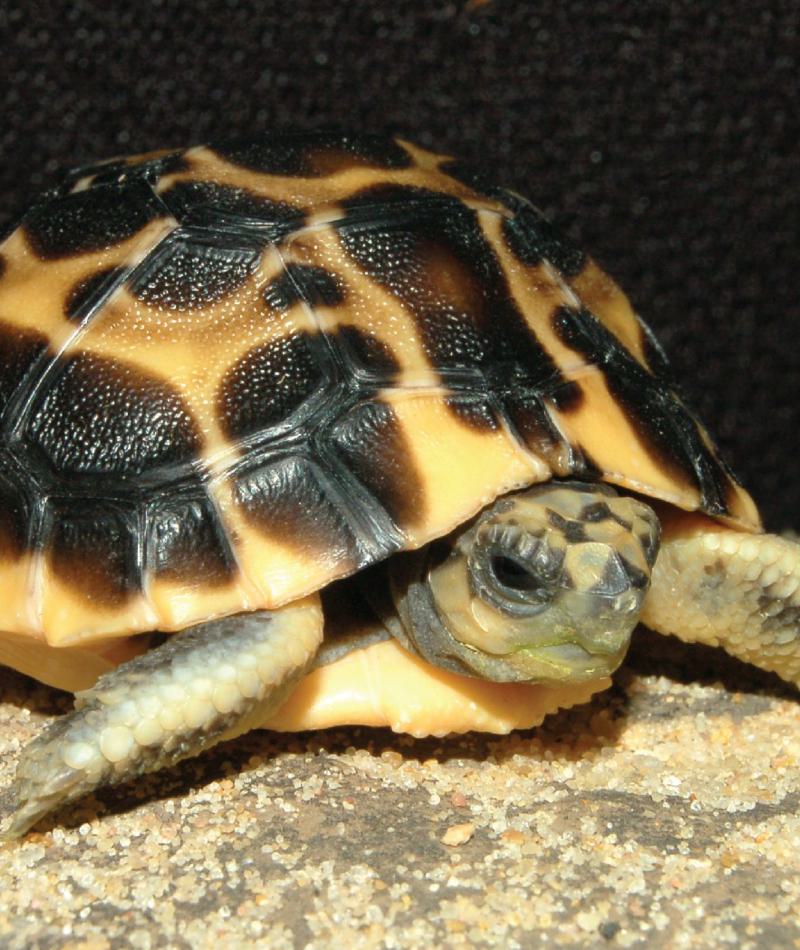
Northern Spider Tortoise
Pyxis arachnoides brygooi
Did you know?
- Northern spider tortoises are part of the Testudinidae family, which they share with other tortoises.
- They are named for the web-like pattern of yellow lines on the top of its shell.
- They live in dry habitats on the southern coast of Madagascar.
- A female will lay one egg per clutch.
Adaptations
Northern spider tortoises are tiny! They reach about four inches in length, making this species one of the smallest tortoise species in the world. They are also the smallest tortoise species out of the four that are endemic to Madagascar.
How does a tortoise so small survive? They take advantage of vegetation and dirt! They use canopy, grasses, and similar coverings to help regulate their body temperature. They also brumate in the dirt during dry seasons, which conserves their energy and keeps them underground, out of the way from predators.
Spider Tortoise
There are three subspecies of spider tortoise. In the wild, all three types live in the desert-like habitats of southern Madagascar, where there are long dry spells alternating with brief wet (or at least “less dry”) periods. During the dry season, the tortoises burrow into the ground among shrubs and grasses. There these little reptiles brumate, rather than truly hibernate. When it rains, the little tortoises come out of hiding, quench their thirst and devour the newly-emerged plants. Spider tortoises also like to chomp on cow dung that’s filled with insect larvae.
Threat Level
- Unknown
- Common
- Near Threatened
- Threatened
- Endangered
- Critically Endangered
- Extinct in the Wild
Critically Endangered
The Northern Spider Tortoise faces an extremely high risk of extinction in the wild.
Range
Southern coast of Madagascar
Habitat
Dry woodlands, brushlands, sand dunes

We care about Northern Spider Tortoises
Spider tortoises, like much of the wildlife in Madagascar, are threatened with extinction, largely due to habitat destruction. They are also affected by the illegal pet trade.
The Saint Louis Zoo participates in the Association of Zoos and Aquariums Species Survival Plan and studbook for this species, and we have successfully hatched this species several times. We also support northern spider tortoises in the Charles H. Hoessle Herpetarium at the Zoo. Learn more about how we are helping endangered species in Madagascar.
Find this animal in Historic Hill

SAINT LOUIS ZOO ZONE
Historic Hill
Historic Hill is a lovely stroll through one of the oldest parts of the Saint Louis Zoo. From the 1904 World’s Fair Flight Cage to the Spanish architectural flavor of the 1920s in the Bird House, Primate House and Herpetarium to the finishing touches of our thoroughly modern exhibits, this area of the Zoo has a unique ambiance and a nostalgic history that make it a great destination.

